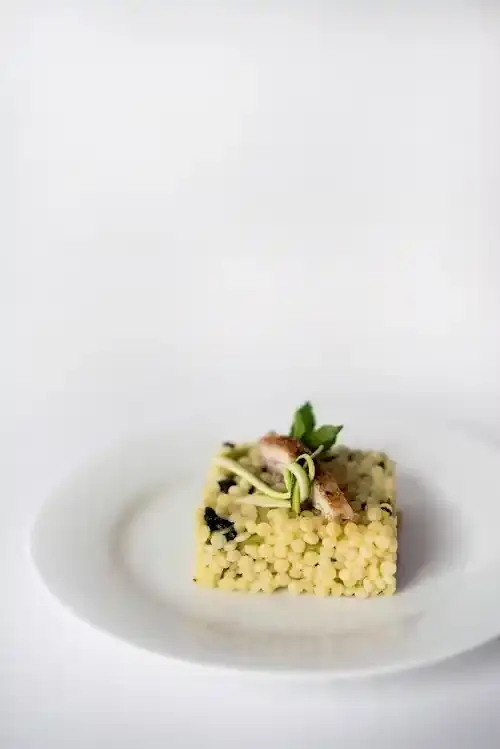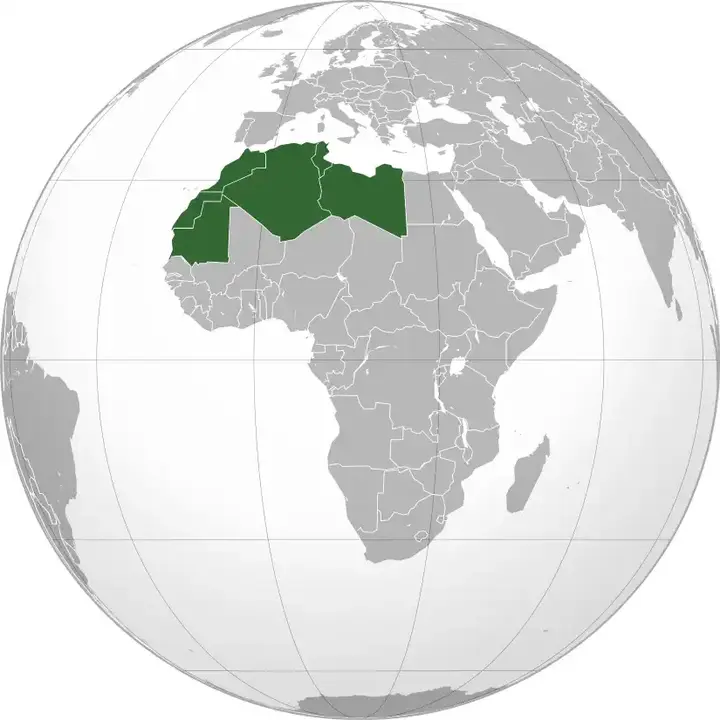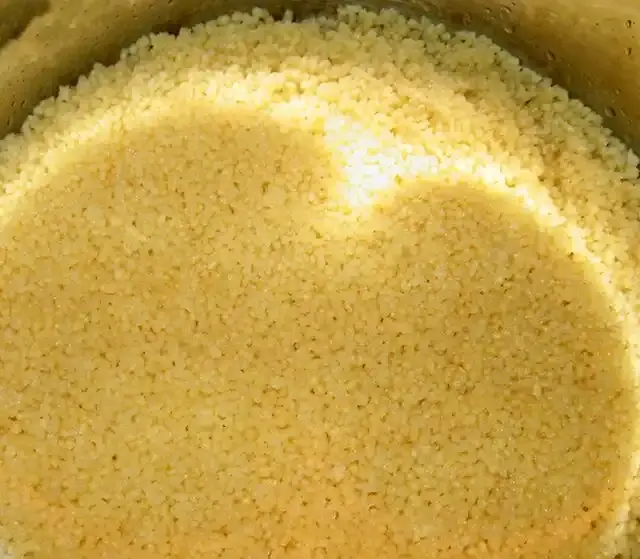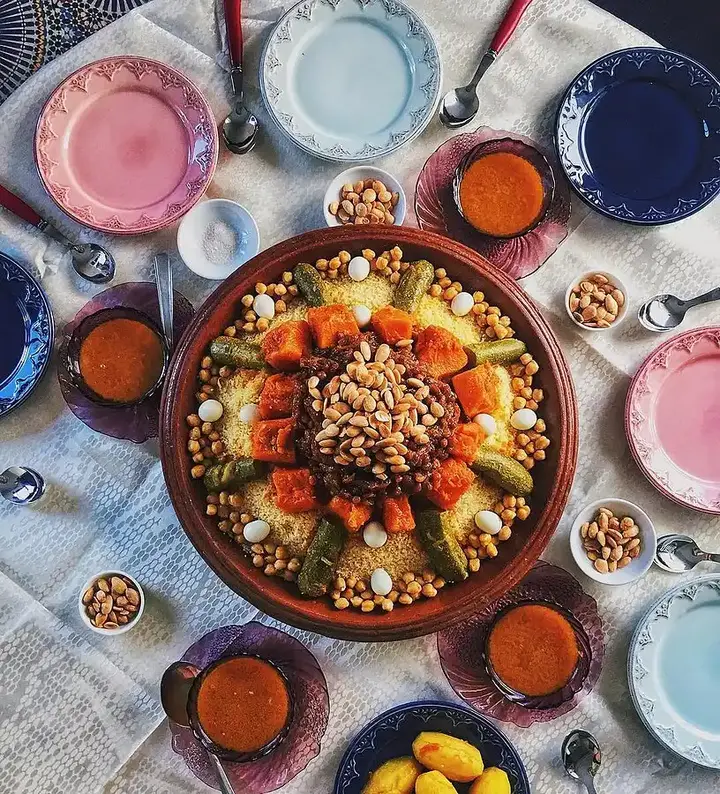Learn how to cook couscous perfectly in just 15 minutes!
Couscous is a popular staple food throughout North Africa and beyond, and is loved for its versatility and speed of preparation. Despite its simplicity, mastering the perfect couscous is a valuable skill that can take a meal to new heights. In just 15 minutes and using a handful of ingredients, this light and delicate dish can be prepared that complements a variety of cuisines. In this article, we will explore the origins of couscous, its cultural importance, how it is cooked, and how best to serve it.
Show key points
- Couscous originated in North Africa among Berber tribes and has spread globally due to its portability and simplicity.
- It holds deep cultural significance in countries like Morocco, Algeria, and Tunisia, often featured in both everyday meals and festive occasions.
- Traditionally made from semolina wheat, couscous requires only a few basic ingredients like water, olive oil or butter, and salt.
- ADVERTISEMENT
- Preparing couscous is quick and easy, typically taking just 15 minutes with simple steps like boiling water, steaming, and fluffing the grains.
- Couscous is incredibly versatile and can be served under stews, mixed into salads, or as a companion to grilled meats or vegetables.
- It is commonly associated with social traditions, served in large dishes for communal meals and viewed as a symbol of hospitality.
- Mint tea and traditional desserts like makrout or chebakia often accompany couscous meals, enhancing both flavor and cultural experience.
1. The origin and spread of couscous.

Couscous originated in modern times in North Africa, especially among Berber tribes in the Maghreb region, which include Morocco, Algeria, Tunisia and Libya. Couscous is a modest grain, traditionally made from durum wheat, and a staple for centuries. Its portability and simplicity allowed it to spread beyond North Africa, making its way to the Middle East, parts of Europe, and even sub-Saharan Africa. Today, couscous is enjoyed all over the world and is valued for its ease of preparation and adaptability to different flavors and dishes.
Recommend
2. Couscous countries: a cultural staple.

Couscous is closely linked to the Maghreb countries – Morocco, Algeria and Tunisia – where it forms an essential part of daily meals and festive holidays. In Morocco, couscous is often served on Fridays, the holy day in Islam, and is usually combined with lamb, vegetables and rich broths. In Algeria and Tunisia, couscous may be seasoned more boldly, often with a sharp harissa sauce and a variety of meat or seafood. Couscous is also common in parts of France, where North African immigrants introduced it to French cuisine.
3. Occasions for the preparation of couscous.
Couscous is a versatile dish served during daily meals and special occasions. In North Africa, it is traditionally prepared on Fridays as part of a family meal after Friday prayers. It is also essential for celebrations such as weddings, births, and religious holidays such as Eid al-Fitr and Eid al-Adha. During these festivities, couscous is often cooked in large quantities and served alongside grilled meats and vegetables. In many homes, couscous is a symbol of hospitality, where guests are welcome to share a common dish.
4. Couscous ingredients: simple and flexible.

In essence, couscous consists of a few key ingredients:
Couscous grains: They are usually made from semolina wheat, although other types such as whole wheat and pearl couscous are also popular.
Water: Used to steam or moisturize couscous grains.
Olive oil or butter: they add richness and prevent clumping.
Salt: enhances flavor.
Optional additives include dried vegetables and fruits such as raisins or apricots and spices such as cumin, coriander or saffron, depending on the origin and purpose of the dish.
5. How to cook couscous perfectly.
Cooking couscous couldn't be simpler. And here is how to do it in just 15 minutes:
A. Boil water: Use the ratio of 1 cup of water to 1 cup of couscous. Let the water boil, add a pinch of salt and a little olive oil or butter.
B. Add couscous: Remove the boiling water from the heat and stir the couscous. Cover the pot with a lid and leave for 5 minutes.
c. Scatter couscous with a fork: After 5 minutes, uncover the pot and gently scatter the couscous with a fork to separate the grains and ensure a light and fluffy texture.
d. Serving: Couscous is now ready to serve or incorporate into the recipe.
For added flavor, the water can be replaced with chicken or vegetable broth, and to add texture, vegetables or nuts can be fried to mix after cooking.
6. How to view and serve couscous.
Couscous is often served under meats or casseroles, which are slow-cooked dishes rich in flavor. Couscous goes great with lamb, chicken or fish and can also be turned into a vegetarian dish by serving it with grilled vegetables. Traditionally, couscous is served in a large common dish, with meat on top. For a more modern twist, couscous salads with herbs, nuts and dried fruits are light and refreshing alternatives.
For family meals or casual dinners, couscous can be served in individual bowls. Garnish with fresh herbs such as cilantro or parsley adds a touch of color and freshness.
7. Drinks and sweets associated with couscous.

In Morocco, couscous is often paired with mint tea, a refreshing drink that complements the flavors of the dish. Instead, light white wine or sparkling water are popular choices in Mediterranean environments.
For desserts, desserts such as makrout (semolina pastry stuffed with dates) or chebakia (honey-topped sesame biscuits) are usually served after a couscous meal. These delicacies, along with a cup of sweetened mint tea, provide the perfect balance of delicious flavors of the meal.
The end.
Couscous is a fast and versatile dish that has deep cultural significance throughout North Africa and beyond. With just a few ingredients and 15 minutes of cooking time, a delicious meal can be prepared perfect for casual dinners and special occasions. Whether served with a creamy stew or as a light salad, couscous is an adaptable and nutritious addition to kitchen repertoire. So, it is recommended to get its ingredients and enjoy mastering the perfect art of couscous!








